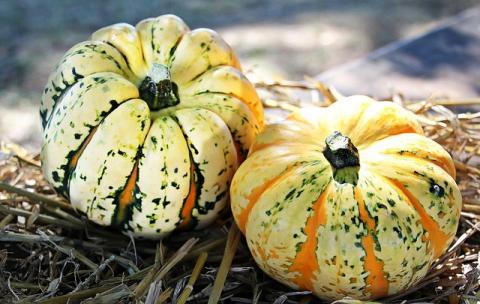
Walking into the markets here in Barcelona, Spain, I am welcomed to find an array of seasonal fruit, from three kinds of watermelon to cantaloupe and late-harvest cherries. Strawberries were on the shelves in late June, but as August rolls into September the last of the summer stone fruits make their appearance, getting ready for autumn’s harvest.
It was not long ago I lived in the United States, a country where I was born and raised. I had once called the agriculture belt home, where many of the country’s food stuffs were produced locally and shipped out far and wide. There was nothing like eating sweet corn off the cob slathered in butter picked from our neighbor’s field or going out with my grandmother on an early June morning to pick strawberries when dew still clung to the plant’s leaves.
After moving out to Phoenix, Arizona, I lost this sense of seasonality. Grocery store shelves were stocked with strawberries in November and squash could be found in late spring. Perfectly shaped fruits and vegetables were available all year through.
Why Eat Seasonal?
- Best Tasting Produce Picked at the Height of Freshness
- Quality, Produce Is Not Picked Prematurely
- High Value of Nutrients Retained when Produce is Grown Locally in Season versus Distribution Worldwide
- Less Spoilage when Transport Time is Diminished
- Diets are More Varied
After living in Europe for four years, I look at my refrigerator shelves, and I manage my produce closely. Tomatoes rot within the week and carrots get weak and discolored within a couple of days. Longevity never seemed to be a problem back in the United States. Carrots were strong and so-called “fresh” for a month. Tomatoes were a perfect shade of red, without a blemish to be found, for over a week or two if I were buying from a local super market.
With an overwhelming availability of fruits and vegetables to choose from in the United States, I wonder if, as a society, we have forgotten that certain fruits and vegetables only grow at particular times of the year? If peaches are available in January, I beg to question, where are they from? There is research that verifies carbon footprint is lessened when fruits and vegetables are grown in climates that are suitable for planting. For example, Spanish tomatoes require far less emissions to grow in the sunny climate around Madrid with fertile soil compared to northern countries like Belgium or Denmark that generate far more emissions heating and lighting greenhouses making suitable growing conditions more locally. The same is true about citrus fruits grown in Florida or California; it would be a mistake trying to grow such trees in Minnesota. Emissions aside, I wonder what chemicals have been used to keep fruits and vegetables grown around the world fresh during transport and beautifully ripe on shelves?
Local farmer’s markets are popping up across the United States and I am so happy to see the increase in popularity. Farmers showcase their labors and hungry buyers reap their harvest, but it is not every day that you can go to these markets. Usually market day is Saturday or Sunday when busy professionals can break away, and often times the prices are slightly higher than the equivalent grocery store stock down the street. Buying organic is at an even higher price point, making eating local, clean, seasonal produce not readily accessible for all.
What is the moral of this story? Awareness. Look at your grocery list. It may not always be the case that you can make the farmer’s market downtown or buy everything organic, but you can make food choices that are in line with the season. Try out new grocery stores and see if inventories vary. Diversify your diet and enjoy better quality produce when bought at the peak of its growing season. Use the list below to plan your next menu.

Chart: http://www.fruitsandveggiesmorematters.org/what-fruits-and-vegetables-are-in-season








